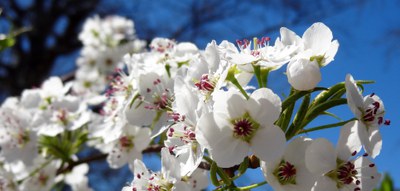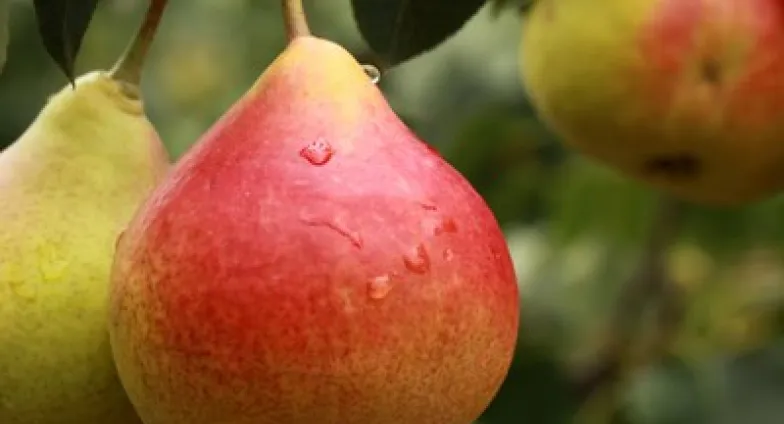The Best Pear Cultivars for North Dakota
Pears are one of the most delectable fruits you can grow in your backyard. The fruits are great for fresh eating and canning. A spectacular bonus of growing pears is the display of pure white blossoms in springtime. It is absolutely stunning!
The keys to success for growing pears in our state include proper site selection, selecting hardy cultivars, training the branches to avoid upright growth, and monitoring for fire blight.
Pear blossoms are sensitive to frost injury. Avoid planting the trees in frost pockets. Mulching with wood mulch can help to insulate the soil, leading to a slow, gradual warming and preventing premature bud break.

The branches of pear trees often have an upright habit. Annual pruning/training and the use of branch spreaders can maintain more horizontal, stronger, more fruitful branches.
Fire blight is the leading killer of pears. This bacterial disease is introduced into the tree through wounds; often created by hailstorms or improper pruning. The initial symptoms will be scorched branch tips. Keep your eyes open for this disease and prune it out when you see it. The “ugly stub” treatment is often used for removing fire blight-infected branches.
Pears are best harvested before they are mature but not yet fully ripe. Mature pears are firm and will easily come off the branch when they are twisted upwards. Harvested pears will ripen fully off the tree when stored during a week of temperatures in the 60s.
The species of pears you select is important. Many of us are familiar with the ‘Bartlett’ pear (Pyrus communis). These varieties with relatively large, teardrop-shaped fruits will not be hardy in the northern part of our state. Ussurian pears (Pyrus ussuriensis), which include ‘Ure’ and ‘Golden Spice’ are hardier. Asian pears (Pyrus pyrifolia) are not hardy in North Dakota.
The varieties listed below are hardy only in Zone 4 unless noted otherwise. They are listed in order of ripening. Two compatible varieties are needed for good yields.
| CULTIVAR | FEATURES |
| Early Gold | A seedling of 'Ure' displaying superior vigor and earliness. Matures in early to mid-August. Hardy in Zone 3. Use 'Ure' as pollinator |
| Golden Spice | Small fruits have a tart, spicy flavor. Good for canning. Vigorous trees are very hardy (Zone 3). Excellent choice as a pollinator. From Minnesota. |
| Ure | Small, greenish-yellow fruit. Very juicy and sweet. Hardy to Zone 3. From Manitoba. |
| Summercrisp | Fruits should be eaten green when they have a crisp texture like an Asian pear. Ripe fruit is sweet. Some resistance to fire blight. Pollinate with 'Parker'. From Minnesota. |
| Parker | Seedling of a Manchurian pear. Large, bronze fruit with good eating quality. Fine grained, tender and juicy flesh. From Minnesota. |
| Luscious | Medium to small, bright yellow fruits. Dessert quality. Tree resists fire blight. Cannot pollinate other varieties. Pollinate with 'Parker'. From South Dakota. |
Information from:
Kalb, T., K. Wiederholt, C. Elhard and J. Good. Starting a Community Orchard in North Dakota. 2019 (revised). NDSU Extension Publication H1558. p. 16.
Contributing source:
Smith, B.R. and T. Roper. 2005. Home Fruit Cultivars for Northern Wisconsin. University of Wisconsin-Extension.
Photos courtesy of Martin LaBar and rkrl001 from Pixabay.

